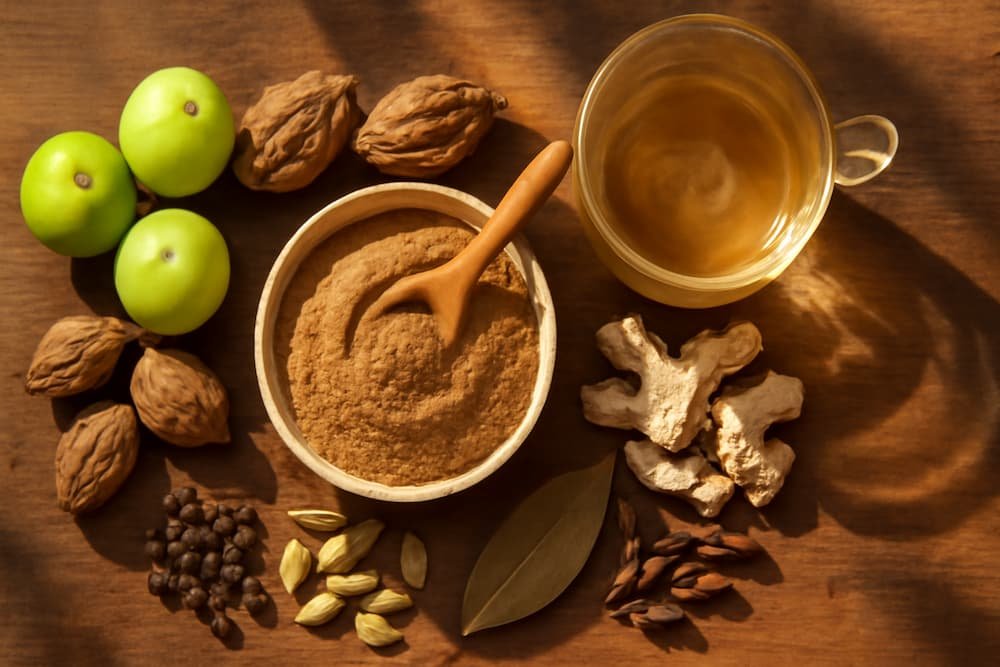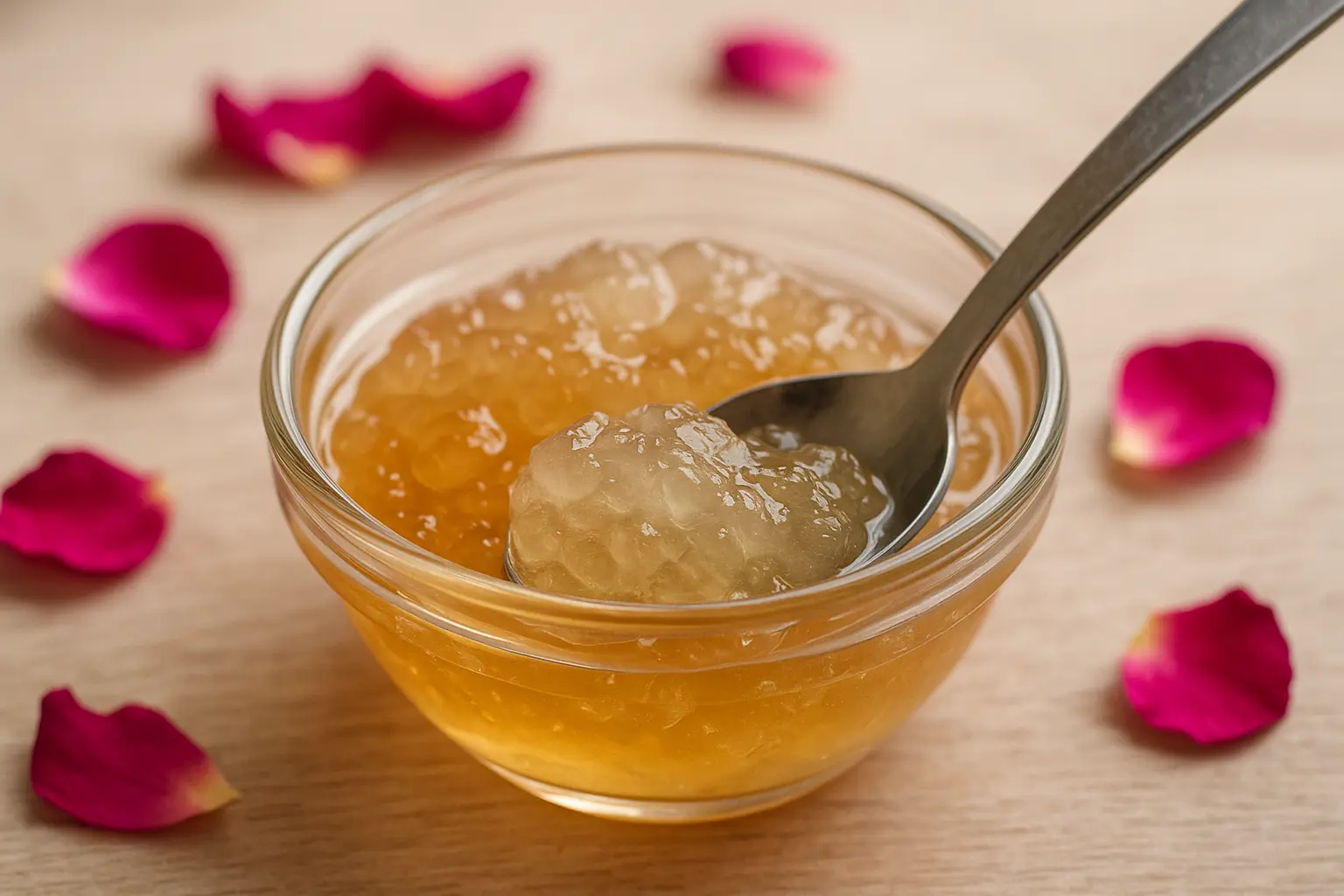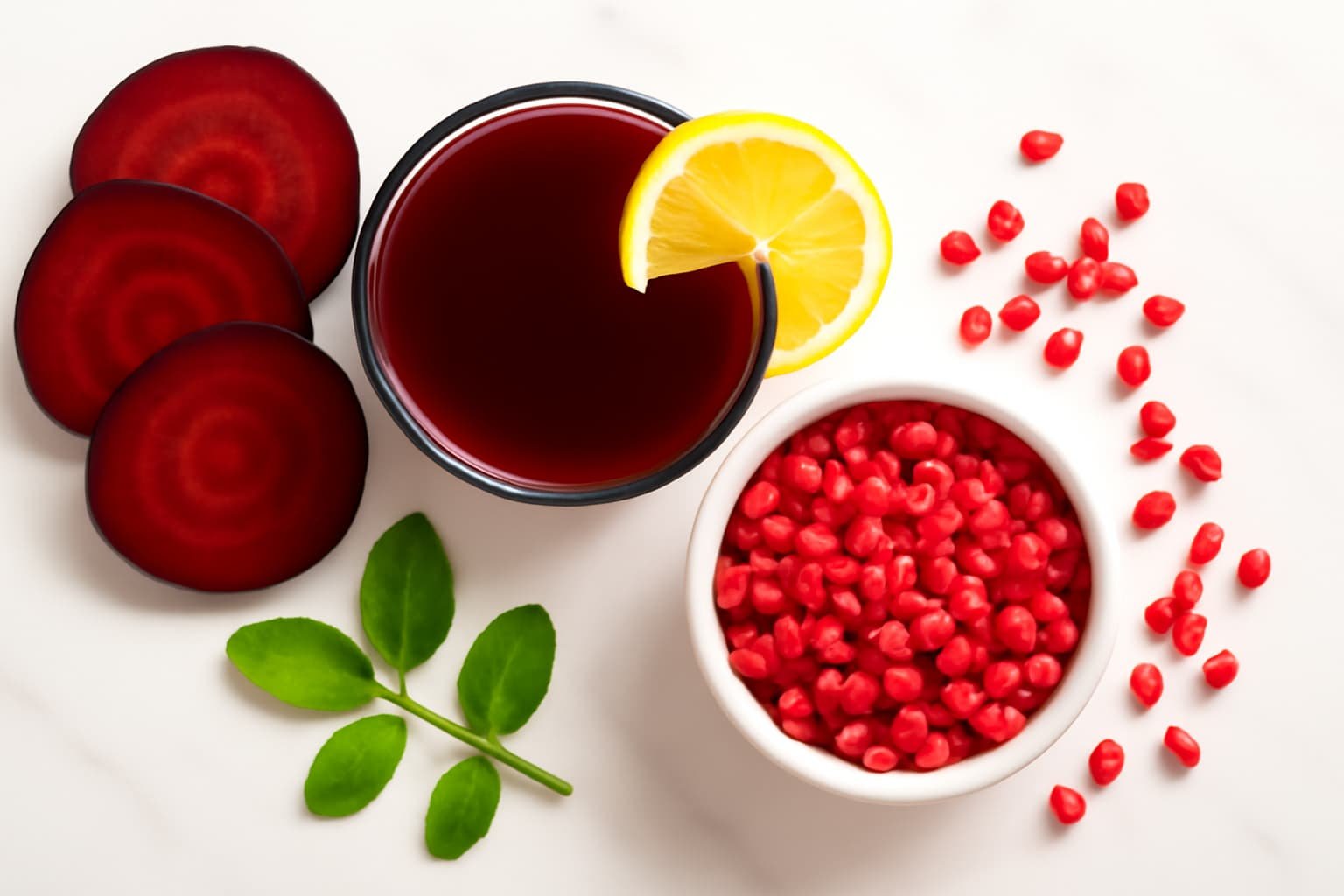Discover Avipattikar Churna Benefits: Uses, Dosage, and Possible Side Effects Explained
Ever sat up late with a burning chest? It feels like forever. In many Indian homes, elders use avipattikar churna. They do this because it works well for digestive issues.
This article gives a detailed look at Avipattikar Churna Benefits and its limits. It talks about its uses, dosage, and side effects carefully. It also covers its ingredients, how to use it, and what research says. The aim is to help readers in India make safe choices.
It’s a guide that balances tradition and science. Some data come from animal studies. Supplements are not meant to treat or cure diseases. Yet, many find it helpful for acidity, gas, and bloating. Read with caution and talk to a doctor when needed.
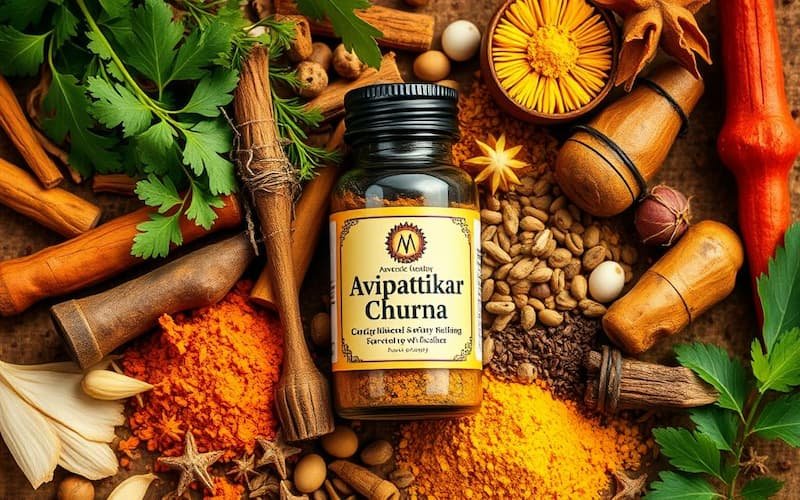
Avipattikar Churna Benefits
Key Takeaways
- Avipattikar churna is a traditional Ayurvedic blend used for digestive health, specially for acidity and bloating.
- Avipattikar Churna Benefits include relief for gas, indigestion, and burning sensation, but results vary.
- Know avipattikar churna uses and avipattikar churna dosage before starting; begin low and seek guidance.
- Review avipattikar churna ingredients to check sugar content and suitability for personal health needs.
- Be aware of avipattikar churna side effects, including loose stools and stomach discomfort.
- Evidence in humans is limited; discuss ongoing use with a licensed healthcare provider.
- Choose tested brands and use moderation to reduce safety risks and support consistent results.
What Is Avipattikar Churna? Ayurvedic Digestive Remedy Overview
People in India follow several powerful home remdies for indigestion problem. In Ayurveda, avipattikar churna is a gentle support for digestive health. It’s a fine powder made from classic herbs. It’s designed to balance Pitta and offer digestive benefits without harsh effects.
Avipattikar churna is an Ayurvedic polyherbal powder for digestive health
This mix, known as avipattikar, combines cooling and carminative herbs. It’s chosen for everyday gut comfort and to keep meals light. It’s perfect for those seeking steady digestive benefits.
Traditional use for amlapitta (excess stomach acidity) and related symptoms
It’s used for amlapitta, or excess acidity. It helps with burning in the upper abdomen and sour belching. It’s a go-to when Pitta is high and digestion feels hot.
Forms available in India: powder, capsules, tablets; OTC availability
In India, you can find avipattikar powder, capsules, and tablets. Brands like Himalaya Wellness, Baidyanath, and Dabur offer them. Most are vegan and gluten-free.
Capsules and tablets are great for travel. But loose churna is preferred for traditional mixing. Always check with an Ayurvedic physician or pharmacist before buying.
Avipattikar Churna Ingredients List and Benefits
In India, people often wonder about avipattikar churna. It’s used for the gut. Knowing what’s in it helps. It has aromatic spices and laxatives that soothe and move things along.
Avipattikar Churna Ingredients List and Benefits
Core herbs: Shunthi, Maricha, Pippali, Haritaki, Vibhitaka, Amalaki, Musta, Vida Lavana, Vidanga, Ela, Patra, Lavanga,
Classical texts list fourteen herbs. Shunthi, Maricha, and Pippali warm and digest. Haritaki, Vibhitaka, and Amalaki, or Triphala, tone the bowel.
Musta supports appetite and balance. Vida Lavana helps with secretions. Vidanga is a carminative. Ela, Patra, and Lavanga soothe spasms. Trivrit and Khanda Sharkara round out the mix.
Proportions: high in Sharkara (~50%), Trivrit (~33.33%), Lavanga (~8.33%); others in smaller parts
Khanda Sharkara is the main ingredient, followed by Trivrit and Lavanga. The other herbs are in smaller amounts. This mix gives the churna its taste and action.
This mix creates a sweet, cooling base. Trivrit adds a purgative effect. Lavanga gives a clove-like aroma. Knowing the mix helps understand the churna’s benefits.
How these herbs may support gas, acidity, indigestion, bloating, and colicky pain
Ginger, black pepper, and long pepper aid digestion and gas relief. Triphala supports regularity, easing pressure. Clove, cardamom, and tamala patra relax the gut.
Salt helps with secretions, and Trivrit aids elimination. This mix tackles acidity and indigestion. It helps with bloating and pain.
| Ingredient | Traditional Role | Key Digestive Focus | Relative Presence |
| Khanda Sharkara | Cooling base | Soothes heat | High (~50%) |
| Trivrit (Operculina turpethum) | Gentle laxative | Indigestion, heaviness | High (~33.33%) |
| Lavanga (Clove) | Carminative, antispasmodic | Gas, colicky pain | Moderate (~8.33%) |
| Shunthi, Maricha, Pippali | Deepana-Pachana (kindles and digests) | Acidity, gas | Smaller equal parts |
| Haritaki, Vibhitaka, Amalaki | Triphala support | Bowel tone, acidity balance | Smaller equal parts |
| Musta | Appetite and balance | Bloating, cramps | Smaller equal part |
| Vida Lavana | Saline support | Secretions, digestibility | Smaller equal part |
| Vidanga | Carminative | Gas, discomfort | Smaller equal part |
| Ela, Patra | Aromatic calm | Spasm, odor | Smaller equal parts |
Summary of the avipattikar churna ingredients list and benefits: this list shows how the churna contains sweet, purgative, and aromatic elements that together reflect the properties of avipattikar churna for common digestive concerns.
How Avipattikar Works for Pitta Imbalance and Digestive Support
Avipattikar is used in Ayurveda to cool and balance Pitta in the stomach. It helps with burning, sour tastes, and feeling heavy after eating. It’s good for those who get upset by spicy or fried foods.
Avipattikar churna benefits for acidity, hyperacidity, and heartburn relief
It’s known for helping with sour belching and chest burn. People use it when food feels too hot in their stomach. It’s also for acid reflux and heartburn at night.
The mix has cooling spices and salts to lower stomach fire. This is why it’s used during festive times or travel. It aims to ease discomfort without slowing digestion.
Avipattikar churna for indigestion, gas, bloating, and gastritis discomfort
It helps with feeling heavy and queasy after eating rich foods. It’s a mix that helps with gas and bloating too.
Ela, lavanga, and patra are studied for their digestive benefits. They help with burning and fullness in the stomach. Taking it with warm water can ease stomach griping and trapped wind.
Pitta-soothing approach in Ayurveda; not a liver formula
The focus is on the stomach and small intestine, where Pitta controls acid and enzymes. It’s made to cool and move, not to detox the liver. It’s for upper GI comfort, not liver detox.
This approach helps explain its use in hot seasons or after spicy food. It focuses on gut balance, staying hydrated, and eating light. It addresses heat in the digestive tract.
Evidence and Research: What the Science Says
Research on avipattikar churna is growing, but it’s just starting. Many say it helps with digestion problems like acid and gas. But, the research is not yet strong, and we need to be careful.
Laboratory insights show it might cool and stop acid. These findings are interesting, but we need more to use it in real life. People also want to know if it has any bad effects.
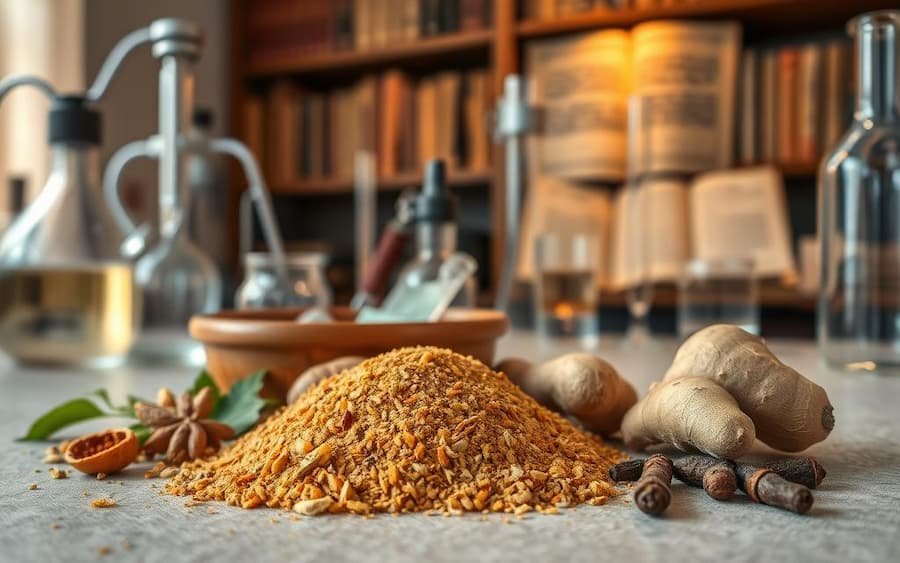
Evidence and research on avipattikar churna
Animal data: reduced gastric acid secretion and peptic ulcer protection in rats at 500 mg/kg
A 2013 study on rats found it might help with stomach acid and ulcers. This matches what some people say about its benefits. It’s why some use it for acid and gas problems.
Most studies are on animal or lab samples. This makes it hard to know for sure how it works in people.
Human evidence remains limited; more clinical trials needed
There are few human studies, and they’re small. They don’t agree on how much to take. Doctors in India want more research to be sure.
When talking about its benefits, we must be careful. It’s not proven to cure or prevent diseases. We should be cautious when using it for symptoms.
Supplements aren’t intended to treat, cure, or prevent disease
Avipattikar and other supplements have rules to follow. It’s important to use them wisely. We should think about its effects, quality, and any side effects before using it.
Key takeaway for readers in India: the research is getting better, but we should be careful. We should balance old wisdom with new research until we have more human studies.
Avipattikar Churna Benefits
Many people use this blend for its calming effect on digestion. It’s known to ease gut heat and improve digestion. But, how it works can vary from person to person.
Digestive health support is its main benefit. It helps with acid reflux and GERD symptoms. Users say it reduces chest burn and sour belching.
It also helps with stomach burning and mild gastritis pain. This is in line with its traditional use in amlapitta. It’s often used when meals feel heavy or spicy foods upset the stomach.
For those with alternating digestive issues, it can help with constipation. It has gentle laxative herbs that support regular bowel movements. At the same time, it soothes acidity.
When comparing avipattikar churna to triphala, it depends on what you want. Triphala is great for daily bowel health. Avipattikar churna is better for acidity relief due to its cooling and sweet nature.
Overall, its appeal is in its targeted relief and easy use. As with any herbal remedy, results can vary. Paying attention to diet, timing, and personal triggers is key.
Avipattikar Churna Uses: When and How to Take
Using avipattikar churna is easy and flexible. Ayurveda likes warm liquids and gentle ways. Brands like Himalaya, Baidyanath, and Dabur give clear instructions. People adjust when they take it based on their digestion and what makes them feel bad.

Avipattikar Churna Uses: When and How to Take
How to take with warm water, honey, or ghee
Many mix a teaspoon of avipattikar churna in warm water. It’s also good to mix it with honey or melted ghee at the start of meals.
Some like it with warm water or milk for comfort. Milk is good for heat, while water is light. Make sure to stir well and drink slowly.
Food timing choices and meal-based tweaks
People choose when to take avipattikar churna based on how they feel. If you’re unsure, start with food to avoid feeling sick.
Those with heartburn might take it before or after meals. Taking it before can help with acid, and after can ease the feeling of being heavy after eating.
Clock timing: morning support or night reflux care
Many take avipattikar churna in the morning or at night. Morning use can help with digestion and reduce acid later. Evening use can help with acid problems at night.
Choosing the best time is personal. Follow the label and adjust based on how you feel and what works for you.
Note: Always follow the product’s directions and seek input from a qualified practitioner, even if you’re using it with other treatments.
Recommended Dosage and Duration
Avipattikar is used in India but there’s no set human dose. The amount to take varies by brand. Always follow the label or ask a doctor for advice.
No standardized human dose; follow product label or clinician guidance
There’s not enough research for a fixed dose. A rat study doesn’t apply to humans. So, the dose depends on the brand and advice from an Ayurvedic doctor or a healthcare provider.
Common practice: about 1 teaspoon (~5 g) once or twice daily; adults for acidity may start low
Indian brands like Baidyanath and Zandu list the dosage in teaspoons. Start with about 1 teaspoon, or ~5 g, once a day. Some take it twice a day if needed. For adults with acidity, start with a small dose to see how you react.
Don’t take more than the label says. Taking too much doesn’t help faster and can cause problems like loose stools or cramps. Taking it carefully helps you see results.
How long to take avipattikar churna for results; short-term vs long-term use
Some people see changes in a few days. But how long it takes depends on your symptoms and diet. Some doctors suggest using it for 4–8 weeks, watching how you feel.
If you’re wondering if you can take it every day, talk to a doctor. They can help plan a time frame and suggest breaks between uses.
| Use Case | Avipattikar Churna Dosage in Teaspoons | Typical Frequency | Suggested Duration | Notes |
| Acidity flare-up | 0.5–1 tsp (~2.5–5 g) | Once daily, may increase to twice daily | 7–14 days, reassess | Start low; avipattikar churna dosage for adults for acidity may be titrated. |
| Persistent heartburn | 1 tsp (~5 g) | Twice daily if tolerated | Up to 4–8 weeks | Stay within the recommended dosage; check label instructions. |
| Sensitivity or mild symptoms | 0.5 tsp (~2.5 g) | Once daily | 2–3 weeks | Evaluate how long to take avipattikar churna for results before changing. |
| Maintenance after improvement | 0.5–1 tsp (~2.5–5 g) | Once daily or alternate days | Time-limited, with breaks | Review with a clinician if extending use. |
Summary cue: Use the dosage on the label, and plan with a healthcare professional. This ensures safe and effective use.
Safety, Side Effects, and Contraindications
Knowing avipattikar churna side effects is key to safe use. There’s not much evidence in humans. So, it’s important to follow the label, start with a small dose, and talk to a doctor first.
Avipattikar churna side effects might include loose stools, stomach pain, and rare allergic reactions. If you experience these, stop using it and see a doctor. Animal studies showed no harm, but humans can react differently.
Too much or long-term use can mess with your body’s balance of salts. This might cause weakness, muscle cramps, or an irregular heartbeat. To avoid this, use it carefully and under a doctor’s watch, even more so in hot weather or with a diet high in sugar.
Quality is also important. Some Ayurvedic products might have heavy metals like lead or mercury. To stay safe, choose brands that test their products and share the results.
Be careful with special groups. There’s not enough data on using avipattikar churna during pregnancy or breastfeeding. So, these groups should avoid it unless a doctor says it’s okay. The same goes for kids without a doctor’s okay.
| Topic | Key Points | Practical Takeaway |
| Common Adverse Reactions | Diarrhea, stomach discomfort, rare allergic reactions | Stop use and consult care if rash, swelling, or persistent GI upset occurs |
| Electrolyte Imbalance Risk | Higher risk with excessive or long-term use | Use the lowest effective dose; monitor for weakness or irregular heartbeat |
| Product Quality | Possible heavy metal contamination in some Ayurvedic products | Choose tested brands with transparent quality reports |
| Contraindications | Pregnancy, breastfeeding, children without medical advice | Clarify avipattikar churna contraindications with a clinician before starting |
| Who Should Not Use | Those asking who should not take avipattikar churna include pregnant or lactating individuals, and unsupervised pediatric use | Seek medical guidance to avoid possible side effects and interactions |
| Key Safety Questions | avipattikar churna during pregnancy; is avipattikar churna safe in pregnancy; is avipattikar churna safe during breastfeeding | Insufficient human data; avoid unless advised by a qualified professional |
Interactions, Special Populations, and Practical Tips
Many ask about using this formula with today’s care and daily life. Below are key points on interaction risks, who it’s for, and how to store and use it in India.
Medicine Interactions and Timing
There’s little data on avipattikar churna and antacids. If you take an antacid, H2 blocker, or PPI, talk to a doctor. This is to avoid any interaction with your medicines.
It’s wise to take herbs a few hours apart from your meds. If you’re on diuretics, potassium, or laxatives, be careful. Always check with a doctor.
Special Populations and Health Conditions
Avipattikar churna has a lot of sugar. So, can diabetics use it? The high sugar content, like khanda sharkara, is a concern for carb watchers.
Diabetics might need a special plan or format for avipattikar churna. If you have kidney disease, ulcers, or electrolyte issues, talk to a doctor first.
Practical Tips: Storage and Format Choice
Store it in its original pack, away from heat, moisture, and sunlight. Always seal it well after use. Discard it by the date on the pack.
Look for brands that have third-party testing, like NABL labs in India. Make sure it’s vegan or gluten-free if you need it.
Picking Between Powder and Tablets
Deciding between avipattikar churna powder and tablets? Powder mixes well with warm water, honey, or ghee. Tablets might be better for those who don’t like the taste or travel a lot.
Capsules are like tablets for easy use. Your choice depends on taste, convenience, and your routine, not the formula’s strength.
FAQs: Avipattikar Churna Benefits
What are the benefits of avipattikar churna?
Avipattikar churna is an ayurvedic formulation known for its numerous digestive benefits. It helps relieve symptoms of acidity, indigestion, and constipation. The properties of avipattikar churna also aid in balancing the doshas, particularly pitta, making it effective for those experiencing hyperacidity and heartburn.
How do you use avipattikar churna?
The use of avipattikar churna is straightforward. It is commonly taken after meals to aid digestion. Mixing a teaspoon of avipattikar churna with warm water or milk can enhance its effectiveness. It is recommended to take it daily for optimal results.
What are the recommended dosage of avipattikar churna?
The recommended dosage of avipattikar churna typically ranges from 1 to 2 teaspoons, depending on individual health needs. It is crucial to follow the guidance of a healthcare professional to avoid potential side effects and ensure safe usage.
Are there any side effects of avipattikar churna?
While avipattikar churna is generally considered safe, some individuals may experience mild side effects such as gas, bloating, or an upset stomach. It is advisable to monitor your body’s response and consult a healthcare provider if adverse reactions occur.
Can avipattikar churna be used during pregnancy?
It is essential to consult a healthcare professional before using avipattikar churna during pregnancy. Although it is an herbal formulation, individual reactions may vary, and it’s best to ensure safety for both mother and child.
What ingredients are in avipattikar churna?
Avipattikar churna contains a blend of powerful herbs, including triphala, which is known for its digestive properties. Other ingredients may include various spices and herbs that contribute to its efficacy in relieving acidity and improving digestive health.
How does avipattikar churna help with digestive health?
Avipattikar churna helps with digestive health by promoting the secretion of digestive enzymes, which aids in breaking down food more effectively. This helps alleviate symptoms of indigestion, gas, and acidity, making it a valuable aid after heavy meals.
Is avipattikar churna effective for treating gastritis?
Yes, avipattikar churna may help treat gastritis by soothing the stomach lining and reducing inflammation. Its ability to balance pitta dosha makes it particularly beneficial for those suffering from acidity-related issues and gastritis symptoms.
Conclusion
Avipattikar churna is a well-known Ayurvedic mix for Pitta digestive issues. It has ingredients like khanda sharkara and Triphala. These help cool acidity and ease discomfort like heartburn and bloating.
In India, many families use avipattikar churna with simple diet changes. It helps some people feel better every day.
Studies show it might lower acid and protect the stomach. But, we need more human studies. Always follow the label and choose quality brands from India.
Most adults can safely use avipattikar churna with caution. But, it can cause loose stools or mild cramps. Pregnant or breastfeeding women and kids should talk to a doctor first.
It’s best for those with a Pitta pattern. But, it’s not for liver issues. Always match it to your symptoms and meals.
Used correctly, avipattikar churna can calm your stomach and bowels. Doctors often suggest short use and then check again. It’s safe for short-term use with the right guidance.
With the right advice, avipattikar churna can be part of a bigger plan. It supports comfort, balance, and daily life.

